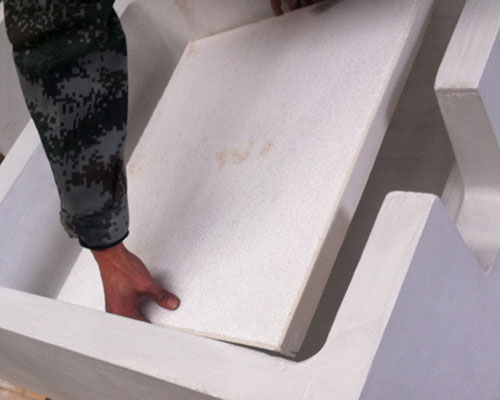Ceramic Filter for Aluminum Rod Casting is a phosphate-free high alumina product with high porosity and mechanochemical stability, and has good resistance to thermal erosion and corrosion of molten aluminum, which can effectively remove inclusions and reduce trapped gas Provides laminar flow filtration of molten aluminum in laminar flow, and performs strict dimensional tolerance processing during the production process.
This combination of physical properties and close tolerances makes it the first choice for molten non-ferrous metal filtration.
Install the ceramic foam filter correctly. Generally, Ceramic Foam Filtering is arranged horizontally in the filter box to allow the aluminum water to pass vertically downward.
When the down-pouring method is adopted, it has the advantage that the aluminum water rises evenly, and there is no turbulence when it touches the filter screen, which can ensure the even start of the filter screen and reduce the risk of channeling. In addition, when the ceramic foam is installed, the components must be sealed with refractory fibers to eliminate the possibility of any bypass.

Ceramic Filter for Aluminum Rod Casting is widely used in the filtration of liquid aluminum in primary and secondary aluminum foundries. Ceramic foam filters can provide better quality in molten metal filtration. They are an open-cell structure made of impregnated foam, providing excellent filtration. The filter provides an effective solution for the removal of various non-ferrous metal oxides and non-metal particles.
Foundry Filter uses CFF aluminum filtration, which is suitable for long-term high temperature loads. Ceramic foam filter has excellent thermal shock resistance and corrosion resistance. Clean molten metal can produce higher quality castings, less scrap and fewer inclusion defects, all of which help increase profits.
The ceramic foam filter for casting is installed in the CFF filter box. After the molten aluminum is degassed, the CFF filter system works.
The filter box has good heat preservation performance.
The CFF filter box and pouring trough are as close as possible to the switchboard.
The reason is that the flow distance of the filtered aluminum liquid can be shortened, and the re-oxidation of oxides can be reduced or avoided.
The molten aluminum flows out from the furnace mouth through the filter box, and then flows through the tank to the washing tank.

